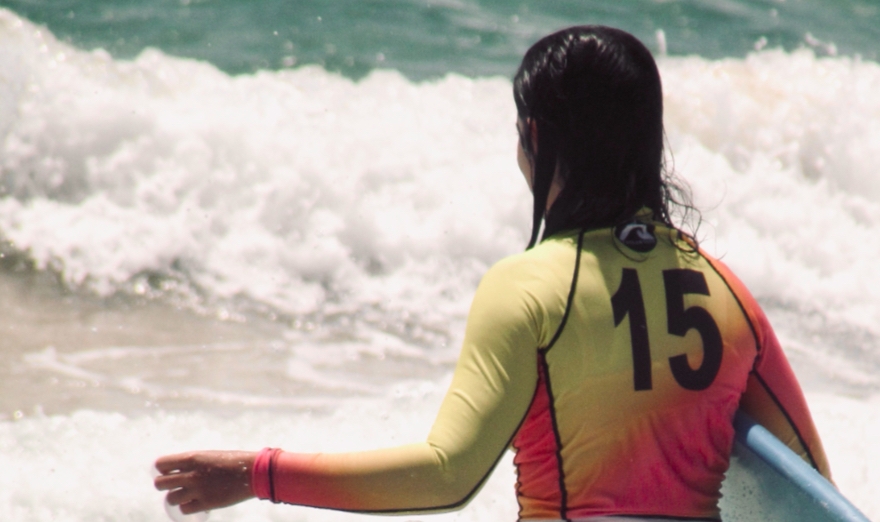No More Sun burns: The Ultimate Guide to UV Protective Clothing
The more you burn, the greater the risk of skin cancer. If you have been burned frequently during your childhood, you are more likely to develop skin cancer later in life. In other words, UV light is one of the biggest but avoidable risks for all forms of skin cancer. Therefore, we recommend that everyone protect their skin from harmful UV light. Additionally, we mention UV clothing (sun-protective clothing) as a good way to protect your skin or your children’s skin from UV damage. But what do we actually know about UV clothing?
What is UV clothing, and how does it work?
UV clothing, also known as sun-protective clothing, is clothing that is specifically designed to protect the skin from UV radiation from the sun. The fabrics used in UV clothing are woven with a tight weave structure and made from synthetic fibers such as polyester, nylon, and spandex. These fibers have the property of blocking and absorbing UV radiation while remaining breathable and lightweight. UV clothing has several advantages over traditional clothing, such as the ability to protect the skin from the harmful effects of UV radiation, even when wet. Traditional clothing does not provide the same level of protection against UV radiation and can become wet, exposing the skin to even more harmful UV radiation.
Does UV clothing protect against all types of radiation?
There are different types of UV rays, and UV clothing protects against all types of radiation. There are three types of UV rays, namely UVA, UVB, and UVC. UVA rays have the longest wavelength and penetrate the skin the deepest. They are associated with skin aging and the development of wrinkles and fine lines. UVB rays have a shorter wavelength than UVA rays and are associated with skin burning and the development of skin cancer. UVC rays have the shortest wavelength and are generally blocked by the ozone layer, making them less relevant for human exposure to UV radiation.
UV clothing is designed to provide protection against both UVA and UVB rays. Wearing UV-protective clothing is, therefore, an effective way to protect the skin from the harmful effects of UV radiation, regardless of the type of radiation. It is important to note, however, that UV clothing does not provide 100% protection against UV radiation, and it is still important to take other protective measures, such as wearing a hat and sunglasses and regularly applying sunscreen, to reduce exposure to UV radiation.
Can UV clothing also be worn in water, and does it provide the same protection as on land?
Yes, UV clothing can be worn in water and provides the same protection as on land. In fact, wearing UV-protective clothing in water is even more important than on land because water can reflect UV rays and increase exposure to UV radiation. These fabrics are lightweight, breathable, and quick-drying, making them perfect for use in water. UV clothing provides the same protection in water as on land because the fabrics are still able to block and absorb UV radiation. However, it is important to note that wearing UV clothing does not provide 100% protection against UV radiation. It is still important to take other protective measures, such as wearing a hat and sunglasses and regularly applying sunscreen.
Is UV-protective clothing more expensive than regular clothing?
UV-protective clothing can generally be more expensive than regular clothing due to the additional materials and technologies required to provide protection against the harmful effects of UV radiation. However, it is important to consider that UV-protective clothing can contribute to reducing the risks of skin damage and skin cancer caused by sun exposure. In the long term, wearing UV-protective clothing can be cost-saving by preventing medical expenses.
How do I know that my UV clothing provides the right protection and meets the required standards?
To ensure that your UV clothing provides the right protection and meets the required standards, it is best to look at the labeling and certification of the clothing. UV-protective clothing should have a UPF (Ultraviolet Protection Factor) rating of at least 30%, which means it protects the skin against at least 97% of UVB radiation and 95% of UVA radiation. When buying UV-protective clothing, look for the UPF rating on the label. You can also look for clothing that is certified by an independent organization, such as the Skin Cancer Foundation. This organization grants the “Seal of Recommendation” to clothing that meets the standards for UV protection.
Do I still need to use sunscreen if I wear UV clothing?
Yes, even if you wear UV clothing, it is still important to use sunscreen on the uncovered parts of your skin to provide full protection. Important areas to cover include the face, ears, neck, (top of the) feet, and exposed arms and legs. We recommend applying sunscreen with an SPF of 30 or higher to the uncovered skin every two hours. Even with “water-resistant” sunscreen, it is important to reapply after swimming in the ocean or pool, showering, or sweating.
15% discount for you
This blog was created in collaboration with UV-Fashions. UV-Fashions offers a 15% discount during the worldwide melanoma awareness month in May, using the coupon code UVSPOTTHEDOT on www.uv-fashions.com.
About UV-Fashions
When founder Jan Willem van der Sterre lost his father to skin cancer, he felt the need to do something to help others protect themselves against this terrible disease. This led to the creation of UV-Fashions, with a mission to spread awareness about the importance of UV protection – because skin cancer is also a big problem in Europe and the Netherlands. At UV-Fashions, you can find high-quality UV-protective clothing and accessories online that are not only functional but also trendy.
